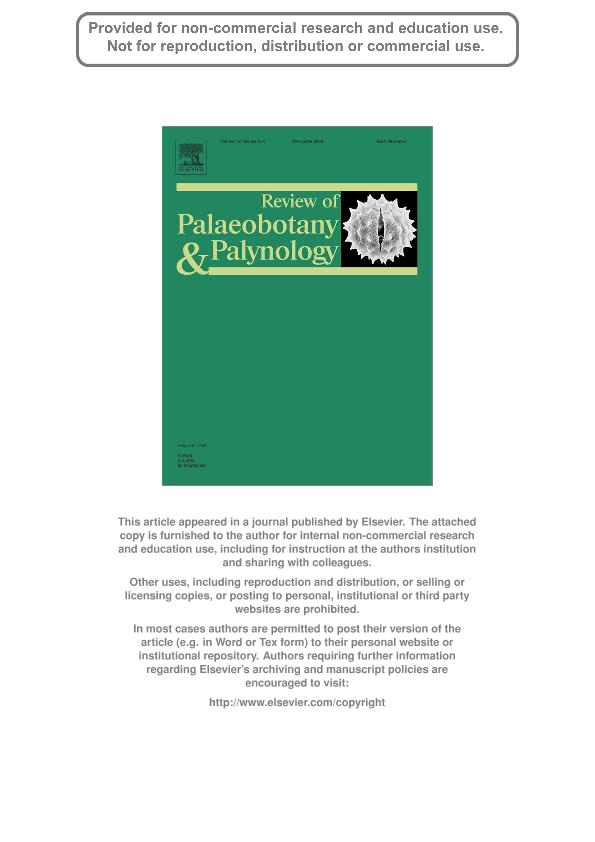Artículo
Biogeographic implications of Albian Mohria-like spores (Family Anemiaceae) in SW Gondwana (Patagonia)
Fecha de publicación:
11/2009
Editorial:
Elsevier Science
Revista:
Review of Palaeobotany and Palynology
ISSN:
0034-6667
Idioma:
Inglés
Tipo de recurso:
Artículo publicado
Clasificación temática:
Resumen
The schizaeaceous extant genus Mohria has a distribution restricted to South Africa and Madagascar area. Its cicatricose spores are characterised by their large size and muri with hollow longitudinal channels unknown in other schizaeaceous genera. Fossil spores that sometimes have been referred to Mohria lack this typical character and therefore the determinations were discarded. Early Cretaceous (Albian) sediments from Patagonia, referred to the Piedra Clavada Formation of the Austral Basin, contain spores that have the characters now found in Mohria. These fossils are hereby assigned to the new genus Palaeomohria that includes several morphological types. The paleogeographical proximity of South Africa and Patagonia in Southwestern Gondwana persisted from the Permian to the Early Cretaceous, during a time when floras of both regions had significant similarities. In this context, the finding of Mohria-like spores in Patagonia suggests that the distribution of this fernwas more extended in the past and became restricted while the continents shifted apart during the Cretaceous/Tertiary. The two living Mohria species may then represent relict taxa of a much more varied and rich group that flourished during the Early Cretaceous in SW Gondwana.
Palabras clave:
Palaeomohria nov. gen.
,
spore
,
Early Cretaceous
,
Patagonia
,
Argentina
Archivos asociados
Licencia
Identificadores
Colecciones
Articulos(MACNBR)
Articulos de MUSEO ARG.DE CS.NAT "BERNARDINO RIVADAVIA"
Articulos de MUSEO ARG.DE CS.NAT "BERNARDINO RIVADAVIA"
Citación
Archangelsky, Sergio; Biogeographic implications of Albian Mohria-like spores (Family Anemiaceae) in SW Gondwana (Patagonia); Elsevier Science; Review of Palaeobotany and Palynology; 157; 3-4; 11-2009; 301-308
Compartir
Altmétricas




